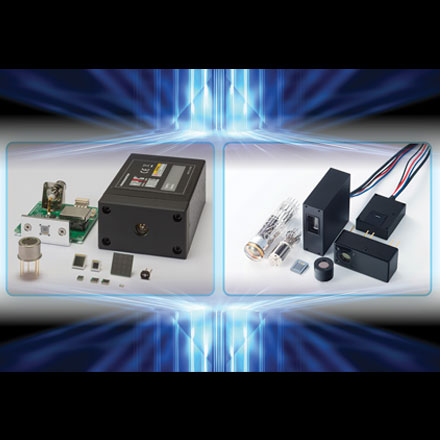|
Wednesday, February 9, 2022 |
|
|
|
Presented by
|

|
|

|
Increasingly, photodetectors capable of detecting single photons are demanded by modern applications, including quantum computing, time-of-flight lidar, and dark matter detection. These applications also present stringent engineering requirements, such as high — nearly 100% — photon-detection efficiency, low dark-count rate, sensitivity in the IR spectrum, and instrument-limited time jitter.
Such applications and their requirements have together motivated research and development efforts for single-photon detectors. Changes have also been made to the existing standard-bearer — the photomultiplier tube.
Slawomir S. Piatek provides a midlevel overview of single-photon detectors: photomultiplier tubes (PMTs), single-photon avalanche photodiodes (SPADs), silicon photomultipliers (SiPMs), superconducting nanowire single-photon detectors (SNSPDs), superconducting transition edge sensors (TES), and photon-resolving cameras. The presentation concludes with a survey of applications in which single-photon detectors are employed.
Image courtesy of Hamamatsu Corp.
Who should attend:
All those interested in single-photon detectors for low-light conditions who may be working on R&D, manufacturing, integration, or purchasing of these detectors in their current workplaces. Engineers and consultants, educators, managers, and others whose photonics system involvement has already expanded into single-photon detection or whose emerging applications will involve these detectors and their adjacent considerations for complete systems in the future. Applications for single-photon detection may include aerospace and defense, automotive manufacturing and test, biophotonic sciences in medical and environmental spaces, machine vision, as well as semiconductor research, fabrication, and test.
About the presenter:
As a senior university lecturer of physics at New Jersey Institute of Technology, Slawomir S. Piatek, Ph.D., has been measuring the proper motions of nearby galaxies using images obtained by the Hubble Space Telescope. As a science consultant for Hamamatsu Corp. in New Jersey, Piatek has developed a photonics training program for engineers. At Hamamatsu, he is also involved in popularizing the silicon photomultiplier (SiPM) as a novel photodetector by writing and lecturing about it, and by experimenting with the device. He earned a doctorate in physics from Rutgers, The State University of New Jersey, in 1994.
About Hamamatsu Corp.:
Hamamatsu Corp. is the North American subsidiary of Hamamatsu Photonics KK (Japan), a leading manufacturer of devices for the generation and measurement of infrared, visible, and ultraviolet light. These devices include photodiodes, silicon photomultipliers, photomultiplier tubes, scientific light sources, infrared detectors, photoconductive detectors, and image sensors. The parent company is dedicated to the advancement of photonics through extensive research. This corporate philosophy results in state-of-the-art products that are used throughout the world in scientific, industrial, and commercial applications.
|
|
|
|
Date: Wednesday, February 16, 2022
Time: 1:00 PM - 2:00 PM EST
Space is limited. Reserve your Webinar seat now at: https://attendee.gotowebinar.com/register/6959398850758316816?source=Eblast
After registering you will receive a confirmation email containing information about joining the Webinar.
|
|
|
SYSTEM REQUIREMENTS
Operating System
Windows® 7 or later, Mac OS® X 10.9 or later, Linux®, Google ChromeTM OS
AndroidTM OS 5 or later, iOS® 10 or later
Web Browser
Google ChromeTM (most recent 2 versions)
Mozilla Firefox® (most recent 2 versions)
Mobile Devices
AndroidTM 5 or later
iPhone® 4S or later
iPad® 2 or later
Windows Phone® 8+, Windows® 8RT+
|
|
|
|
.: More from Photonics Media
|
|
|
|